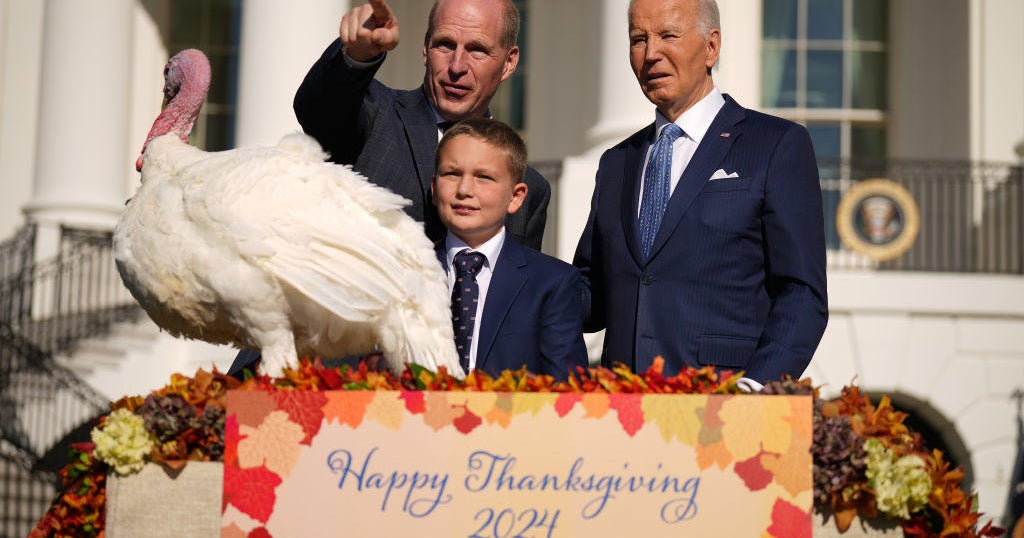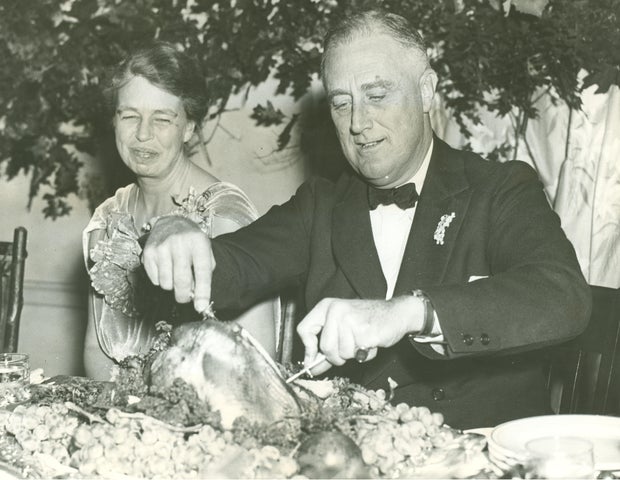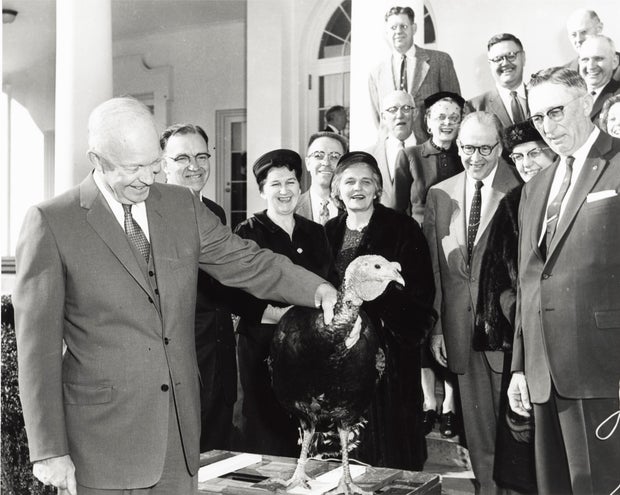CBS News
This is how retailers get you to spend more money

As shoppers gear up for Black Friday and the holiday shopping season, it can be easy for people to rack up debt that will weigh them down well into the new year. So it pays for consumers to be aware of some of the tactics retailers employ to get them to spend.
For example, most offers that dangle savings in the form of free shipping or a free gift if you spend over a certain amount don’t save you money. The practice, called “spaving,” or spending more in order to save, rarely benefits consumers, according to personal finance experts.
“I understand the appeal of getting to checkout and a notification pops up saying spend $10 more to get some perk,” LendingTree senior economist Jacob Channel told CBS MoneyWatch. “But 90% of the time when you break it down, it doesn’t make sense. You’re not actually saving money if you are spending more of it.”
Here are five tactics retailers use to get you to spend more, according to the U.S. Public Interest Research Group (PIRG), a consumer advocacy group.
Creating a false sense of urgency
The fear of missing out on a good deal can nudge consumers into making impulse buys. Although some offers really are only valid for a limited time, U.S. PIRG identified a number of sellers on Etsy, an e-commerce site for independent craftspeople, who used fake countdown clocks for deals that never expire.
Of 20 top-selling products on the site with countdown timers on deals, 80% of them simply reset when their tickers tickers hit “0,” according to a PIRG study.
“The ‘limited’ time window may not be as limited as it sounds and the deals not as good as they seem,” U.S. PIRG’s R.J. Cross told CBS MoneyWatch. “Make your list, comparison shop on those items, and don’t get distracted by offers you haven’t had the time to think through.”
Implying scarcity
Online retailers may label products as “selling fast!” or, as a consumer is considering a purchase, display how many other consumers are browsing the same item.
“Retailers and advertisers are always trying to get you to buy more than you need and spend more than you want,” Cross said in a statement. “Once you know what to look for, you end up chuckling when you see these tactics instead of falling for them.”
Pricing tricks
Ever wonder why a price reads $4.99 and not simply $5? When sellers round an item’s price down, it suggests to a shopper that it is cheaper, PIRG notes. Although $4.99 is only a penny less than $5, a shopper is more likely to fixate on the dollar figure — $4 — versus the cents.
Even removing a comma from a high sticker price like $1,200 and displaying it as $1200 can entice someone to pull the trigger, according to PIRG. Meanwhile, breaking the cost of an item down into monthly installments can also make the price seem smaller than it really is, the organization noted.
“You’re still going to have to pay the full cost, and sometimes even more in late fees, if you’re not careful,” Cross pointed out.
Dubious testimonials
Many retailers feature online testimonials ostensibly from customers raving about a “life-changing” vacuum cleaner or pair of sweatpants. Some of these account are from real customers, while other reviews cannot be trusted because they have been generated by a bot or the company itself, PIRG said.
At bottom, it’s a form of peer pressure — shoppers are subtly induced to think that buying the product will make them as happy as the satisfied customers depicted in the testimonial. In reality, many online reviews are fake, especially as AI bots proliferate.
“When you look at reviews on a product, don’t necessarily take the star ratings for granted. Better to look through the comments and find those that seem real — that either include a picture of the product or that make a point specific to the product instead of a generic note like ‘great product!'” Cross recommends.
Appeals based on fear
Many marketing pitches and ads suggest that your life will somehow be worse if you don’t make a purchase, from being at risk of a home invasion to hair loss. With e-commerce, of course, such messages are tailored to your individual interests and tastes given that website cookies track share your browsing patterns with retailers.
Messages “about how to fix our perceived flaws only become more capable of finding us at all hours of the day whenever we go online,” Cross said.
CBS News
“CBS Evening News” headlines for Thursday, Nov. 28, 2024

Watch CBS News
Be the first to know
Get browser notifications for breaking news, live events, and exclusive reporting.
CBS News
Iowa man decorates neighbors’ homes to celebrate wife’s love of Christmas

Indianapolis, Iowa — Santa Claus isn’t driving a sleigh this year in Indianola, Iowa — and instead of presents, he’s bringing joy and light, decorating every house on his block for the upcoming holiday season.
John Reichart, 74, loves Christmas but there’s something else he loves more: His wife of 53 years, Joan. She was diagnosed with Alzheimer’s four years ago, and since then, the Marine veteran has made it his mission to keep making her memories.
“If it wasn’t for my wife, I don’t know if I would’ve done it,” Reichart said. “But she wanted Christmas, so I’d give it to her. I’d do anything to make her happy.”
Now there are tons of extra hands on his project, helping set up lights, decorations and more. A steady stream of admirers are also coming to check out the holiday cheer.
CBS News
“I think the whole neighborhood feels very blessed to have him in this neighborhood,” one neighbor said.
“It’s moving,” added one spectator. “That’s what Christmas is all about.”
Reichart said he can’t see himself stopping the tradition now.
“As long as she’s OK,” he said. “And even if she would pass, I’m gonna do it in her memory as long as I can do it.”
Joan said that she’s loved the holiday spirit her husband has brought to the neighborhood.
“I didn’t know what to think,” Joan said. “But I’m glad he did it. I love him.”
To thank Reichart and celebrate Joan, his neighbors have set up a P.O. box to receive Christmas cards. They’ll give the cards to Reichart to read them to his wife.
CBS News is inviting viewers to send cards. To mail a card to the Reicharts, address it to this P.O. box:
John Reichart
C/O Frank Ewurs
P.O. Box 133
Indianola, Iowa, 50125
CBS News
The White House’s history with Thanksgiving, and how the turkey pardon came to be

The history of White House Thanksgiving traditions date back more than 160 years to President Abraham Lincoln, who established the national holiday.
During his time in office, Lincoln issued a proclamation calling for the celebration of Thanksgiving, triumphing over similar efforts of presidents who came before him, according to the National Park Service.
The official designation of the annual national holiday is due, in part, to writer Sarah Josepha Hale. The NPS notes that in 1827 — as editor of “Boston’s Ladies Magazine” — Hale began writing essays calling for the national holiday. Finally, on Sept. 18, 1863, she wrote to Lincoln asking him to use his presidential powers to create the holiday.
Lincoln obliged and a few weeks later, on Oct. 3, 1863 — during the height of the Civil War — he issued the Thanksgiving Proclamation. Ever since, the country has celebrated Thanksgiving Day.
But it wasn’t until after a bill passed by Congress on Dec. 26, 1941, that made the holiday fall annually on the fourth Thursday in November.
Thanksgiving at the White House is usually relatively quiet and includes the tradition of pardoning lucky turkeys from their doomed fate of the dinner table.
Franklin D. Roosevelt Presidential Library and Museum/NARA
Presidential turkey pardons
The first turkey pardon ever issued is believed to have been by Lincoln as recorded by White House reporter Noah Brooks in an 1865 dispatch, according to the White House Historical Association.
Lincoln had granted clemency to a turkey named Jack belonging to his son Tad Lincoln, that had originally been slated to be gobbled up at the family’s Christmas dinner in 1863.
Dwight D. Eisenhower Presidential Library and Museum/NARA
But the annual practice in which the White House sent pardoned presentation turkeys to a farm to live out their days did not occur until Ronald Reagan’s presidency in the 1980s, the WHHA says. In decades prior, presidents would occasionally receive turkeys from the poultry industry and decide not to eat them without an official pardon.
The WHHA notes the practice of sending presentation turkeys to the president became a norm in 1981, and the pardoning ceremonies quickly became a national sensation. By 1989, the annual tradition materialized with President George H.W. Bush — as documented by the association — speaking to the pardoned turkey, saying the line his successors still reprise at ceremonies today: “He’s granted a presidential pardon as of right now.”
George Bush Presidential Library and Museum/NARA
On Monday, President Biden issued the final two turkey pardons of his term, to Peach and Blossom, sending them to live out the rest of their lives at Minnesota’s Farmamerica as poultry ambassadors for agricultural students.
Getty Images
Gathering with family and friends
Aside from the turkey pardoning spectacle, presidents spend Thanksgiving in the same fashion as households across the country.
The first documented Thanksgiving gathering at the White House dates back to Nov. 28, 1878, according to the WHHA. Then-President Rutherford B. Hayes held a large Thanksgiving dinner gathering with his family and private secretaries, singing hymns in the Red Room afterward and inviting African-American staff to enjoy their own Thanksgiving meal in the State Dining Room.
The tradition has since withstood the test of time. Through economic hardship and times of wars, presidents have carved out time for family. The WHHA notes that President Woodrow Wilson’s first Thanksgiving meal during World War I on Nov. 29, 1917, was an economical one — and one without cranberries.
In recent decades, presidents have taken to the tradition of celebrating the holiday outside the White House at their so-called “go-to” vacation spots. President Ronald Reagan in 1985 traveled to the family ranch in Santa Barbara, California.
President-elect Donald Trump spent all but one Thanksgiving of his first term at his Mar-a-Lago estate in West Palm Beach, Florida. President Biden has spent every Thanksgiving during his term with family in Nantucket, Massachusetts as the Biden family has for over 40 years.














